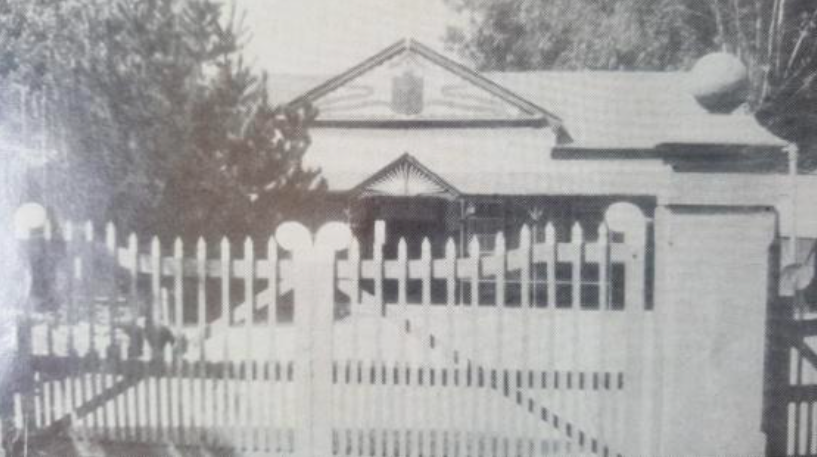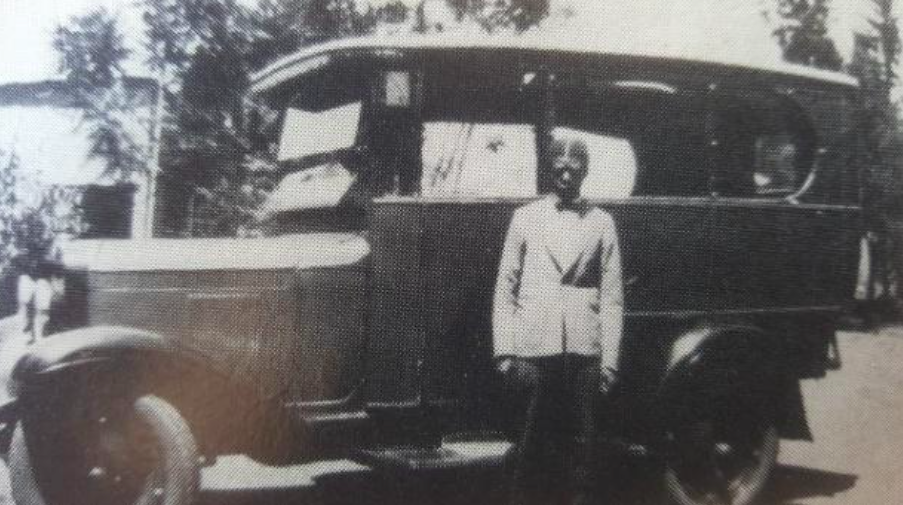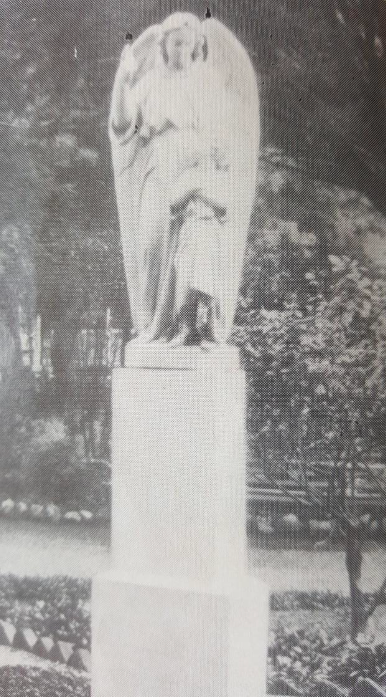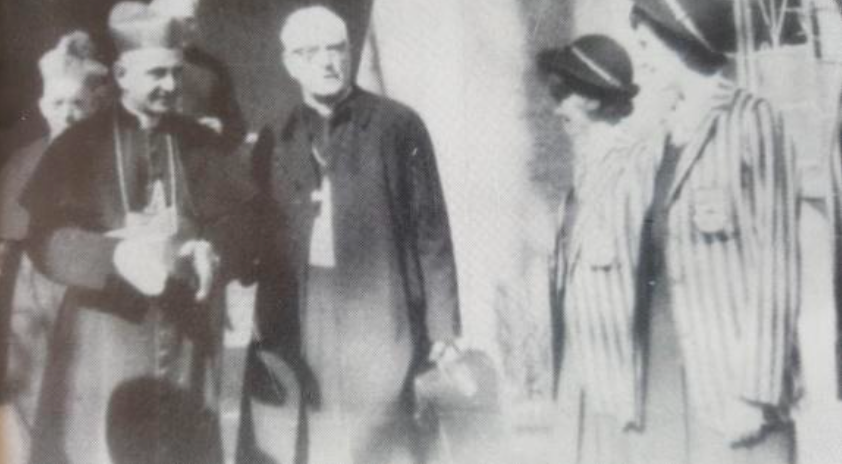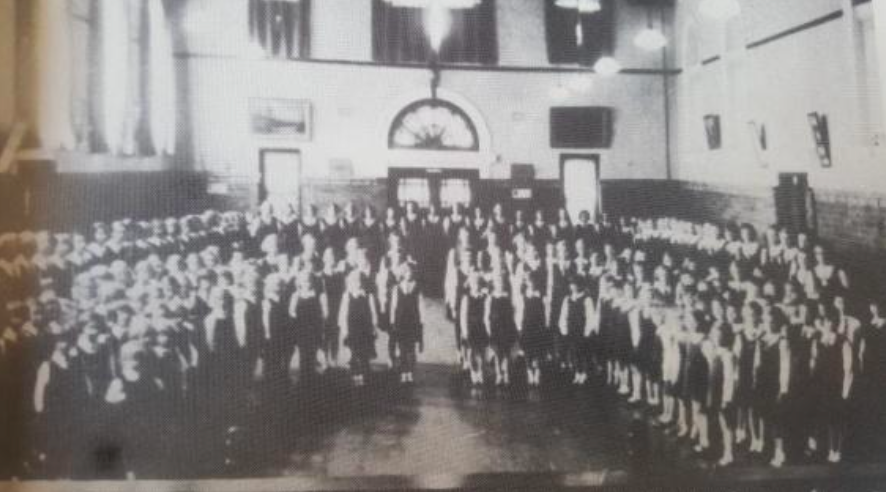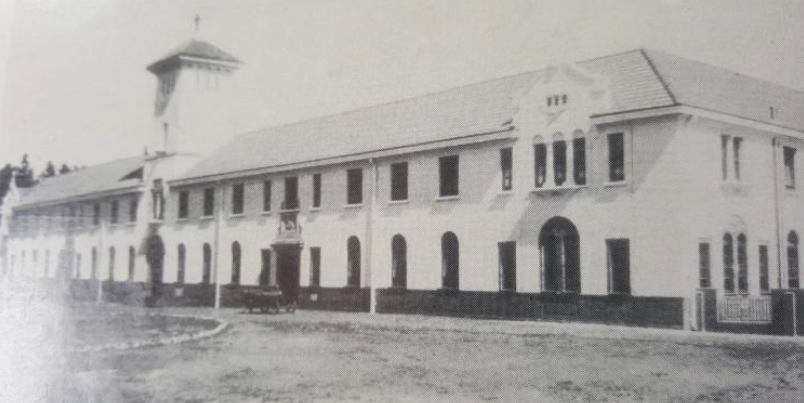
Disclaimer: Any views expressed by individuals and organisations are their own and do not in any way represent the views of The Heritage Portal. If you find any mistakes or historical inaccuracies, please contact the editor.
The rich and vibrant history of this beautiful school and its buildings can be traced back to the old Transvaal Republic with its dust trodden tracks and open veld teeming with wild animals and small tin towns dotting the rand.
The year was 1895 when the first group of 6 Ursuline sisters under the leadership of Mother Alfonse Schwab, left the Dutch town of Sittard on 27 November 1895 to start an Ursuline Catholic school in the new mining boom town of Barberton in the low veld of the Transvaal. They were accompanied by father Schock who helped them to build the first Ursuline house and school in town.
They arrived in Lorenzo Marques (Maputo) by ship on the 31st December 1895 and it took them another week to reach Barberton. Their luggage, which consisted of some wicker trunks filled with their possessions, only arrived 6 weeks later by ox wagon.
The school flourished in Barberton with many of the mainly English residents attending. But the culmination of a devastating storm destroying the Ursuline house and the death of father Schock in late 1898 made it impossible for the sisters to stay in Barberton.
The sisters decided to move to the new golden city of Johannesburg to start a much needed English school and arrived here in Braamfontein in September 1899 just less than 3 weeks before the outbreak of hostilities between the Transvaal Republic and the British Empire that would become known as the Second Anglo Boer War.
The sisters were advised to return to Europe as soon as possible and the British Government offered to pay their passage. Three of the sisters decided to stay and became nurses during the war.
Mother Alfonse returned with a second group of nuns also from Sittard, as soon as peace returned in 1902 when they reopened the school in Braamfontein which grew rapidly. As soon as the second group arrived, the parish priest of a small town about 3 hours ride from Johannesburg, called Krugersdorp, requested the sisters to open an Ursuline Boarding school in his parish. The town already boasted an English School, Town School, founded in 1902, but he thought that the catholic ethos was much needed in educating young ladies.
The sisters agreed to his request and under the leadership of Mother Mary Overbeck, purchased part of a farm consisting of 13 Acres of land in Krugersdorp North for £ 7500 in 1903. That is about R15 000 in today’s currency.
The new property consisted of an old double story farm house and its outbuilding including a large stable block (which still survives today as the swimming pool changing rooms) standing alone in open uncultivated veld.
The first school building and convent
The school opened on the 9th of February 1904 with 5 boarders and 12 day scholars. It thrived and at the end of 1904 there is the first
record of a item concert help by the learners. This was followed in 1905 by a full scale programme presented to the public.
The following article appeared in the “Rand Daily Mail” on the 13th of February 1905:
St Ursula’s, the new English College situated on the pine-clad hill North West of Krugersdorp, is now ready to accommodate a greater number of pupils. It is interesting to note that the register contains the names of students from Cape Town, Port Elizabeth, Heilbron and even Lorenzo Marques. The parents of these young ladies would, a short time ago, have been compelled to send their children to Upton College, London, but they can now obtain the same advantages at St Ursula’s which is rightly called “The Sanatorium of South Africa”.
Very soon the old farmhouse became too small for the growing school and it was added onto in early 1906. The cultural life of the school also developed rapidly and in April 1906 the school offered musical and dramatic entertainment. Later, in August of the same year, during the prize giving, the school boasted with entertainment including singing, an operetta and a recital by a string orchestra.
One of the best-known foundresses of St Ursula’s is Mother Mary Overbeck and it is mainly thanks to her that the school survived and flourished. She is remembered as a woman of strong character wrapped in a coating of kindness and fun. Her feast day on the 8th of September was celebrated for many years. She passed away on the 3rd of June 1952 in the age of 80.
The school was plunged into a deep mourning when Sister Emily Lenoir became the first Ursuline sister to pass away here at the school on the 18th of March 1908.
Sister Gerhard established a lasting memorial to the hard work and diligence of those very first pioneering sister when she beautified the grounds in the early days by planting pine, oak and fruit trees. Some of which can still be seen on the grounds today, leaning slightly East due to a typical high veld thunderstorm just after being planted.
In 1910 the school buildings were again found to be inadequate to the growing numbers of learners. Therefore, the first corrugated iron buildings were constructed including a chapel, dormitories and other services. The entrance in those early years was also through a pair of gates facing Buiten Street. From the street the old badge with the motto “Sola Nobilitas” on scrolls could seen.
The last big additions to the old farmhouse happened in 1915 when the first iron chapel was replaced by the second chapel built of brick and mortar. Other rooms were also added at this time. The 1915 additions can still clearly be seen as they form the nucleolus of the present pre-school.
The outbreak of the First World War in 1914 along with the outbreak of the Spanish Flu at the end of the war in 1918 had dire consequences for not only the town but also for the school. The parish priest was also a casualty of the flu along with many of the school’s pupils and parents.
The sisters of the school decided to keep all learners at the school’s hostel in order to limit the spread of the Flu. They also prayed to the Image of Christ of the sacred Heart and promised to make a special prayer to the Lord every year if the lives of everyone would be spared. No casualties were recorded and the sisters still pray every year on the anniversary.
Yet the school continued to grow in the early 1920’s and by 1925 the school bought its first bus, replacing the horse drawn cart used until then. The first driver was named Stephen according to a noted photograph.
The first school bus
By 1928 the numbers had again increased so much that the buildings were inadequate again. This time however, it was decided to start with completely new building on the site.
The corner stone was laid by Bishop O’Leary with great fanfare on the 1st of April 1928 and the building was completed by mid-1929.
The new building was completed much in the style of Sir Herbert Baker and his associates. It was designed by the firm of architects Cowin, Power and Ellis and built by Mr G Beckett. Being two stories high and having a rather plane, long facade pierced by different windows, gables and a central tower. Over the front door a statue of St Angela, the foundress of the Ursuline Sisters, stands guard. The former emblem of the Roman Union of Ursulines with the motto “One Heart and One Spirit” can be seen.
At this time the guardian angel statue, brought out to South Africa by some sisters in 1902, was installed in front of the new building.
The guardian angel statue
The school grounds were very different then to as they are today. The building was surrounded by orchards and other trees. The building was reached by the long drive planted by pine trees and the premises were entered onto from 1st Street.
For many of our learners the drive and its trees represented “Going Home” and they were forbidden to go into the “mysterious orchards”.
At this time the pupils were called “Brownies” because of the brown gym tunics they had to wear.
The School’s English House System was implemented in 1934 with 3 different houses. They were called Windsor House (which later became Brecia), Norfolk House (which became Merici) and York House (which became Laurus). These houses became a very important part of the school’s character and the introduction of different awards for achievements helped to build these houses into the established custom it is today.
New music rooms and a special room for the matric girls were added to the side of the hall in 1945 to soften the noise in the chapel.
And it is remembered that it wasn’t uncommon for the ladies leaving the school after matric to start weeping days before they had to go as was the case with the class of 1945 who wept for 3 days.
In 1949 Bernadette Peter became our first Head Girl.
A new Science-wing, complete with staff accommodation and new laboratories for Science and Plant and Animal Studies, was constructed in 1958 on the north side of the building.
The school entered a new phase of its life in the 1960’s starting with the very important visit of Cardinal Montini, who later became Pope Paul VI in 1962.
Visit of Cardinal Montini
The school purchased further property across the road facing onto Dam Street, which became Premier Street in 1963 for the purpose of building a new Primary School there. Building work progressed rapidly and the new Primary School opened on the 24th of January 1966.
The last major building work came in 1974 when the old Junior School was remodelled and extended to house the new Preschool which is still in use today.
The school celebrated its 100th birthday in 2004 with great festivities and accepted boys into the High School for the first time in 2013 and saw them matriculate in 2017.
We are deeply grateful in 2024 to celebrate our 120th birthday and will be doing so with a range of celebrations throughout the year including the opening of the new “St Ursula’s School Museum, Art Gallery and Research Centre” which will include a copy of the entire “Cycle of St Ursula” (Which is a series of Renaissance artworks currently held in the Academia in Venice, Italy).
It becomes impossible not to see the work of our Lord in the way He has kept us safe and growing over the past 120 years. To become one of the oldest educational institutions on the West Rand while still growing, changing and expanding to this very day. We honour the school when we remember one of the old school songs:
Brick by brick the new school rose,
Majestic, tall, and of friendly pose,
With long straight corridors and spacious hall
And a lofty chapel over all.
There stands the school!
Who knows St Ursula’s School?
Cry it over Africa, back comes the call
From teachers, typists, mothers, wives, nuns and nurses
Old Girls all!
St Ursula's School Hall
Main image: The late 1920s school building
About the author: Jaco Mattheyse has been a teacher at St Ursula's High School for the past ten years. He teaches History with great passion. As of October 2023 he has also been appointed curator of the new St Ursula's Museum, Art Gallery and Research Center that is due to open later this year as part of the schools 120th birthday celebrations. Jaco was born in Krugersdorp and lived there his entire life and studied at the University of Johannesburg. He has a great interest in the history of the area as his family has been living in the shadows of the Magaliesberg since the 1870's.
Comments will load below. If for any reason none appear click here for some troubleshooting tips. If you would like to post a comment and need instructions click here.

